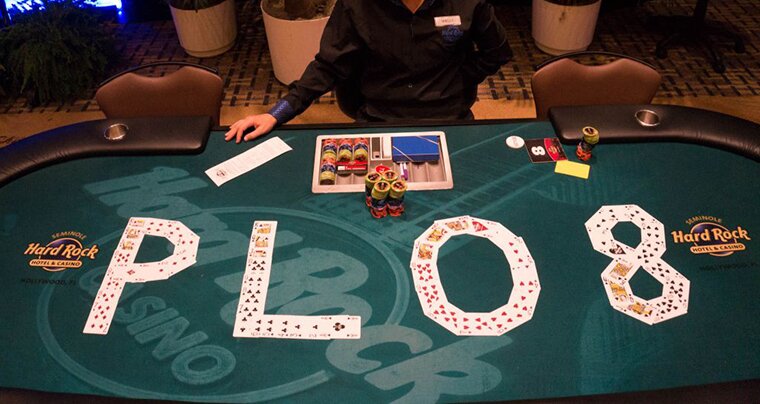Plo8 Rules
In this video I explain the rules of Omaha 8, give you some starting hand guidelines, and some tips on how to play your hands post flop.Check out my Full Con. It is a tradition of Poker that any club or group of players may make special rules, called 'house rules,' to suit their personal preferences. Of course, any such house rules should be written down. Before play begins, the players should set a time limit for when the game ends and stick to it.
The Principals Behind Beating PLO8 Games
Split pot poker games add a whole new element to your strategy. With the 4 hole-cards used in Omaha games, there are plenty of opportunities to make better decision making get you the profits over time.
Free Online Omaha Hi Lo
This page gives you an overview of the different ways in which you can get an advantage in a typical low stakes Pot Limit Omaha 8 or Better (PLO8) game online. I will assume that you are already familiar with the PLO8 rules, betting and basics of how the pot is split at showdown.
Types of Advantage in PLO8
In poker there are many ways you can get an advantage over your opponents which – over time – will result in winning money. Here I cover 3 different advantages, and give tips on how these translate into better results compared to the average opponent. These are hand strength advantage, positional advantage and hand-reading advantage.
Hand Strength Advantage in Pot Limit Omaha Hi-Lo
One of the main mistakes new players make in PLO8 games is to play too many hands. With the pot split between the highest and lowest (if qualified) hand, there are a lot of starting hands which look playable.

Once you take all the high-only hands into account, and start to add in low hands, you’ll quickly find yourself playing 40%+ of the hands you are dealt.
This is way too loose.
When you are playing lower buy-in PLO8 games, you can get an immediate advantage over your opponents simply by being more selective than they are with your starting hand selection. A great place to start is the low end. Stick to hands with an ace and at least one wheel card (2 to 5), preferably those with backup. Suits, pairs and extra small cards can all help. You should also trim starting hands from the high-only range. Mid card rundowns (even double suited) can be tricky to play, with risk of splitting the pot with a low hand at one end, and facing higher straight cards at the other. Hands with ‘danglers’ are easy candidates to cut from your range. Over time, simply playing better hands than your opponents will bring you the money.
Positional Advantage in PLO8
Position is key in all poker formats. This means that – on average – you play more often when you act after your opponents in the betting than you play when betting first. Since you can see whether they bet, and how much they bet, your own decision is based on more information. Over time, this extra information will win you more money. It will allow you to get away from tricky hands early when there is a lot of betting action, it will also let you pick up pots when an opponent shows weakness (for example checking both the flop and the turn).
The easiest way to get position on your opponents after the flop is to play more hands from the button than you do from either the blinds or early position at the table. As the button acts last on the flop, turn and river betting rounds – you have a powerful information advantage.
One thing to watch for is that your position relative to the pre-flop raiser is also good. For example, if there are some players that limp, then a raise before the action reaches you on the button, calling could cause your positional advantage to be reduced. What can happen is that you call the raise, and one or more limpers also call. When the flop comes, everyone checks the action to the raiser. If she bets, then you have to act before you know what the players who limped pre-flop will do. A reraise can thin the field when you are on the button, though this is dependent on both your hand and the tendencies of the raiser(s).
Hand Reading Advantage
My final tip for taking advantage of your opponents in PLO8 involves paying attention! Simply by watching your opponents, and taking note of how they bet, you can find ways to figure out what kind of hand they are holding.

Omaha Plo8 Rules
The exact hand is very difficult to figure out. Instead you should make notes of how they bet with different categories of hand. There are a lot of possibilities;
High Only Hands: Does an individual opponent raise with high type hands before the flop, or limp / call with them? Some opponents will always raise / reraise with A-A-X-X high only hands, though will call instead with anything weaker. If a flop comes with 2 or more baby cards, will an opponent continue with a high hand? This is particularly important if the pot is small.
Low Hands: The main thing to look for here is what low hands your opponent will raise with, and what ones they will call with. Look for players who play ‘bad’ lows, 3-6-X-X for example. Does your opponent bet pot with nut lows, and less than pot with the 2nd / 3rd nuts?
How Do You Play Plo8
Draws: When you see a showdown you will be able to think back through the betting and see how different players are betting draws. When someone has a draw to the nuts (low or high) the key question is whether they are betting or calling / checking. Some opponents wait until they ‘have it’ to put the money in. If you spot this type of player, it can be very easy to get away from a hand – and to steal pots when the draws miss!